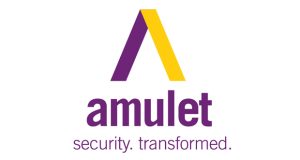Kieran Mackie, Managing Director of Amulet explores the benefits of a packaged security approach and how to approach the tender process to attract the best responses
In the security sector, I often see multiple tenders from the same company for different security services, such as access control, manned guarding and CCTV. This approach can be inefficient and costly and points to a lack of internal collaboration prior to tenders being issued.
Instead, a shift towards combining security services required offers numerous benefits that not only streamline operations but also maximise outcomes.
It is essential to begin the tender process by identifying the desired objectives. Whether the aim is to add value, reduce anti-social behaviour, or protect property, a clear understanding of the goals is crucial. Equally important is conducting a comprehensive risk assessment before initiating the tender. By bringing these issues to the table, clients allow the security service providers to develop tailored solutions that address their specific needs.
Then, security providers can develop contracts based on the client’s desired outcomes rather than simply selling hours. This approach prioritises expertise and focuses on achieving specific goals. Unfortunately, many security companies today find themselves bogged down by tender responses centred around minor details such as uniform costs and training, detracting from the key aspect of security.
An ideal tender process involves defining risks, issues, and key performance indicators (KPIs), while leaving the security firm the flexibility to determine the most effective approach to achieving the desired outcomes. By shifting the focus away from measuring hours and instead emphasising results, clients can encourage innovative problem-solving and foster a partnership that drives efficiency and cost reduction.
AN INTEGRATED APPROACH
The practice of procuring separate tenders for various security services, such as guarding, CCTV, access control, visitor management, and cyber security, is not only inefficient but also isolates different providers and inhibits collaboration.
Integrated services, on the other hand, provide a more holistic and cost-effective solution. For example, by planning guarding and CCTV together, the need for a large number of officers is reduced. If two separate firms are providing these services, there will be a lot of overlap and you may end up with sites that have plenty of officers on the ground along with an extensive CCTV operation.
Furthermore, the procurement of different services through separate tenders often leads to conflicting requirements from different departments within an organisation. This lack of alignment can be counterproductive, hindering the development of a cohesive security strategy. By bundling services, stakeholders from various departments can work together to identify shared goals, paving the way for a more effective and integrated approach to security.
INTELLIGENCE-LED SECURITY
Technology plays a crucial role in enhancing security services. Rather than relying solely on manpower, advancements in technology can supplement and enhance security measures. Smart vehicles, equipped with sensors to monitor areas of concern, have immense potential and can even offer value beyond traditional security.
For example, the Amulet Hub vehicle, trialled at London Zoo with the Zoological Society of London, has explored the potential use of sensors to track both animal and human behaviour and detect signs of aggression. Drones can also be employed for aerial surveillance, while audio tracking systems can identify potential threats. Such innovative solutions add significant value when offered as a combined services approach.
When we discuss these solutions as one, we allow for long-term planning and collaboration between clients and security providers. By establishing a partnership based on shared objectives and security spending, both parties can work towards continuous improvement and adapt to evolving needs effectively.
THE MODERN-DAY SECURITY OFFICER
Focusing on outcomes instead of hours also helps get the best from the modern-day security officer. The stereotype, perpetuated by films and television, is of a middle-aged man sitting in a security booth. This couldn’t be further from the truth and does a disservice to our industry.
The role of the security officer nowadays is much more customer-focused and relies heavily on soft skills, such as communication and problem-solving. An outcome-based approach will ensure you get the best out of officers, rather than stipulating that they must be on-site for no other reason than that’s the way it’s always been.
FM HAS A PIVOTAL ROLE
It is essential for organisations to align their objectives and perspectives on security services internally. By consolidating the procurement process into one combined approach, different departments can synchronise their efforts and work towards the same goal. Facilities management can play a pivotal role in leading this alignment, bridging the gap between different stakeholders and helping build trust and collaboration over time.
Begin by collating your existing security contracts and all the services being delivered. When the contract expires, you can start to determine which services can be procured as one and when this will be possible.
Underpin this by considering what you want to achieve from your security. It should be much more than defining hours or the number of officers. The outcomes-based approach will give bidders the freedom to develop expert tender responses, and you may well find they are able to add value in areas you had not even considered.





